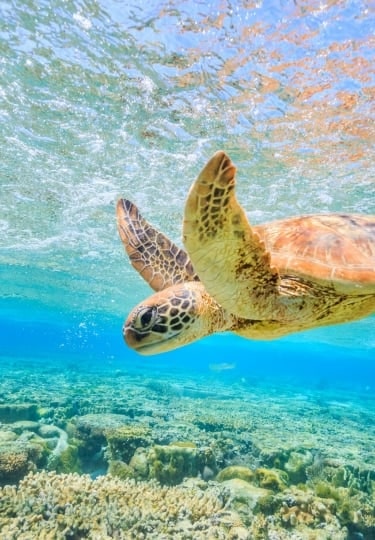What natural wonder can be seen from outer space, but not while standing at sea level? It’s the Great Barrier Reef, whose more than 134,000 square miles of underwater coral reefs extend for 1,400 miles off of Australia’s northeast coast.
Home to incredible biodiversity, both below the surface and above, a visit to the Great Barrier Reef is one of the world’s most exciting experiences. Snorkeling and scuba diving may be the first activities that come to mind, but with hundreds of islands plus historic towns and spectacular rainforest to explore back on land, the Great Barrier Reef is a well-rounded destination for all kinds of travelers.
Here’s everything you need to know about planning the perfect visit to the Great Barrier Reef.
Best Places to See the Great Barrier Reef
As the Great Barrier Reef encompasses more than 600 islands and over 3,000 indvidual reefs, it may be a challenge to pick just a couple spots to visit. Three main cities—Cairns, Port Douglas, and Airlie Beach—serve as the major tourist gateways to experience this region.
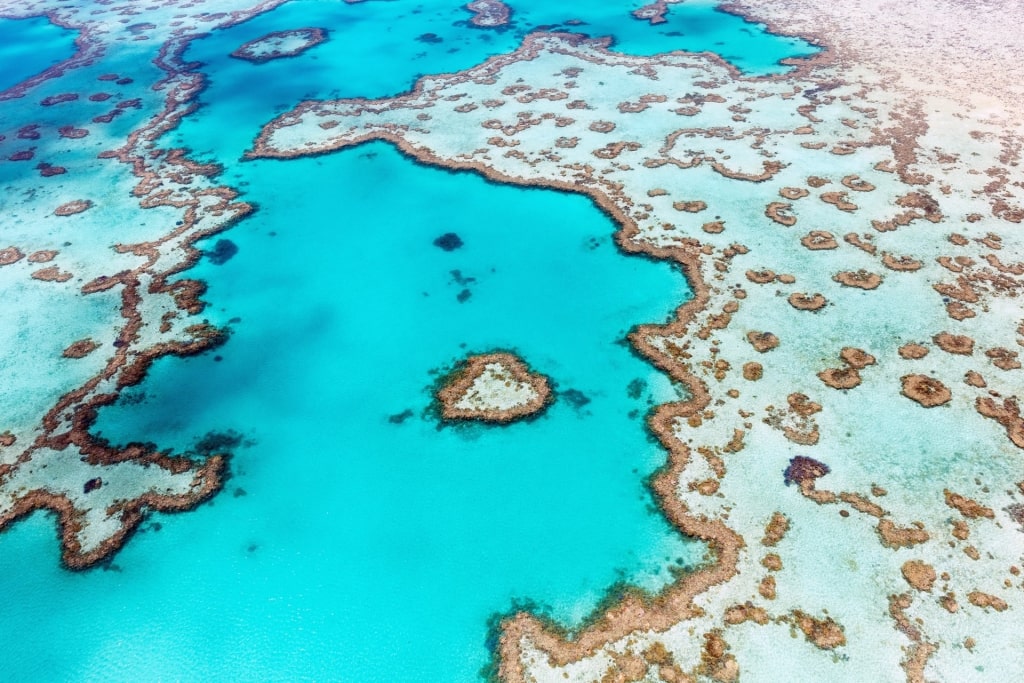
Heart Reef
Hook Reef
If your goal is to see the most-photographed site across the whole reef, then head to Hook Reef and Hardy Lagoon, best viewed via helicopter or small plane from Airlie Beach. The lagoon is home to Heart Reef, so named for its romantic shape, which has made it a popular point for marriage proposals.
Fitzroy Island
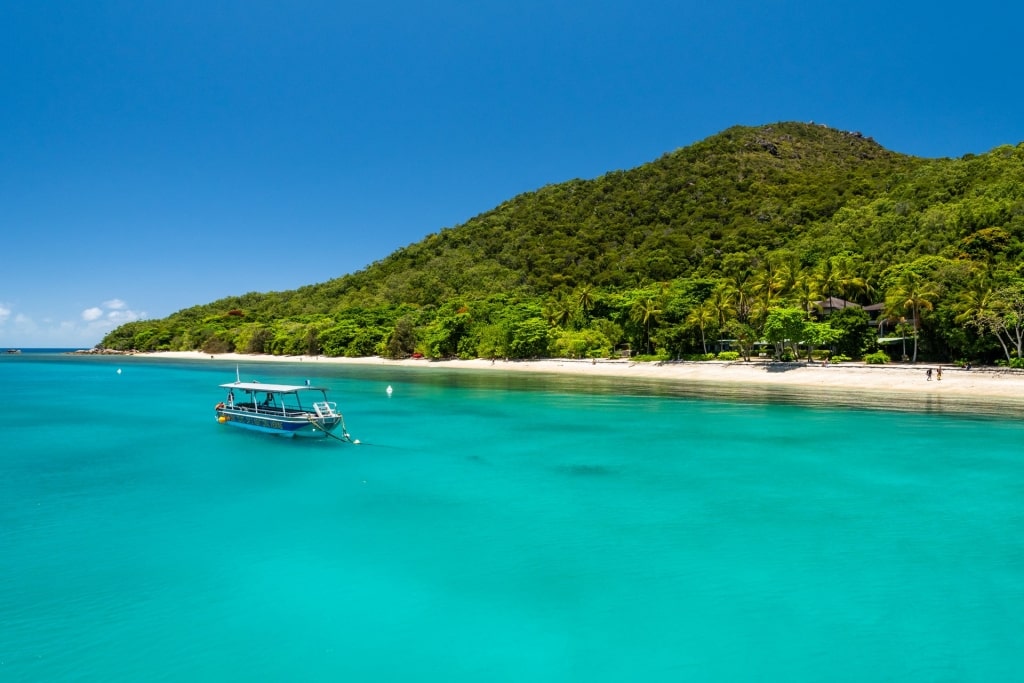
Fitzroy Island
So close to Cairns and yet so far, Fitzroy Island is an idyllic tropical island paradise with the bonus of having some of the world’s best snorkeling and scuba diving just off the soft sand beaches that ring the island.
Much of the island is protected territory as part of the Fitzroy Island National Park, which means that you can enjoy a day on a secluded spot of sand. Take breaks from sunbathing to snorkel the incredibly clear, calm water and spot local schools of brilliantly patterned fish.
Moore Reef Pontoon
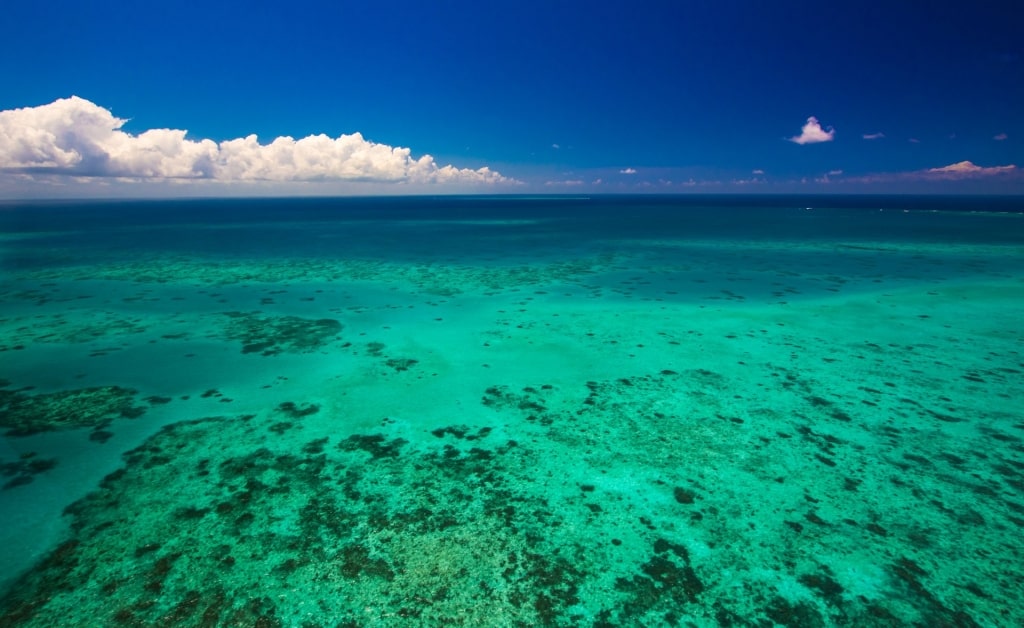
Moore Reef Pontoon
Farther out from Cairns, about 26 miles off the coast, is the Moore Reef Pontoon. This unique outpost is sought out by travelers for the bucket-list experience of spending the night out on the open ocean, with the Great Barrier Reef as your bed.
In reality, you will sleep safe and dry, but the rest of your time will be spent immersed in the ocean as you make your way around the snorkeling stations and introductory scuba zone. The waters around the pontoon are home to more than 10,000 fish and marine animal species.
At night, the skies above are similarly home to innumerable stars. Here, you can feel at home on the Great Barrier Reef, enjoying a BBQ dinner as you listen to the sound of the waves and watch the sunset from a position few others have seen.
When to Visit the Great Barrier Reef
The best time to visit the Great Barrier Reef is November through April. During this season, you’ll find the warmest temperatures and availability for the tours and experiences you want to book.
Visiting from Airlie Beach
The town of Airlie Beach, midway between Brisbane to the south and Cairns to the north, is the gateway to the Whitsunday Islands. These 74 islands within the Great Barrier Reef are composed mostly of untouched territory and secluded beaches
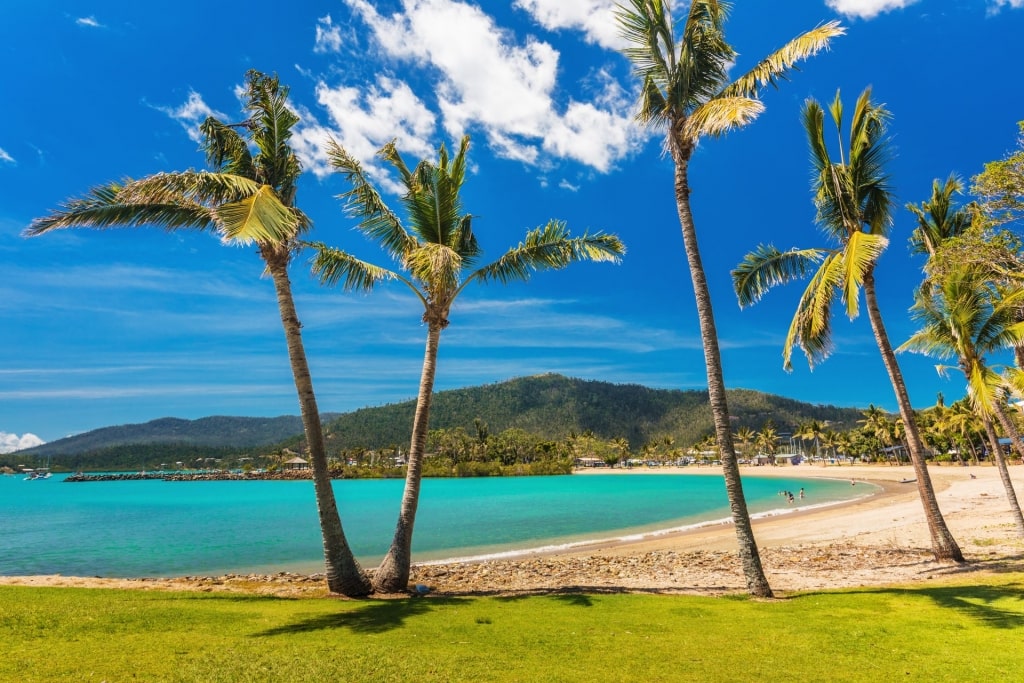
Airlie Beach
The proximity of Airlie Beach to these islands makes it the ideal departure point for a sightseeing flight, which buzz low, at only 500 feet, over the most photogenic points of this region of the Great Barrier Reef.
Keep your eyes peeled for turtles, rays, whales, dolphins, and more from your plane while flying over the crystal-clear waters, and have your camera ready to capture world-famous sights like Whitehaven Beach, Hamilton Island, Hook Reef, Daydream Island, and the Heart Reef.
The Heart Reef is within Hook Reef and Hardy Lagoon, which together form the most popular image of the Great Barrier Reef—perfectly calm, azure waters with the scalloped ochre edges of living reefs all around.
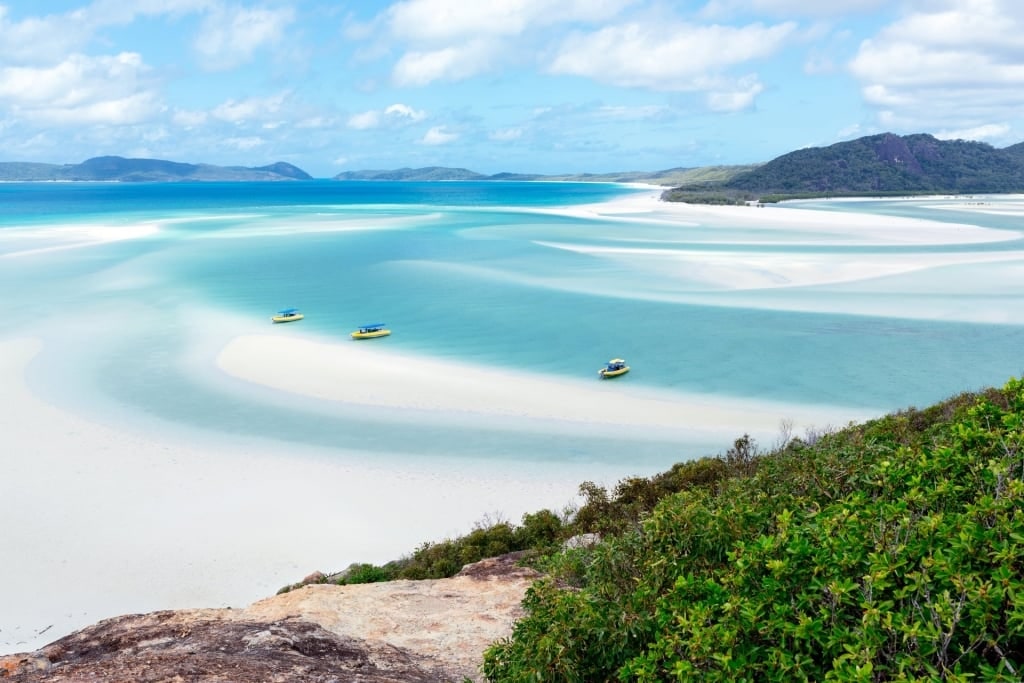
Whitehaven Beach
Get up close to the beauty on a catamaran and snorkel the reef. From Airlie Beach, exploring the inner reef off the Whitsundays is like receiving a sampler of the best the region has to experience.
Visiting from Cairns
As the most popular city for travelers looking to visit the Great Barrier Reef, Cairns is appropriately full of snorkel and dive shops, as well as boisterous, open-air bars for you to toast to a successful trip out to the reef.
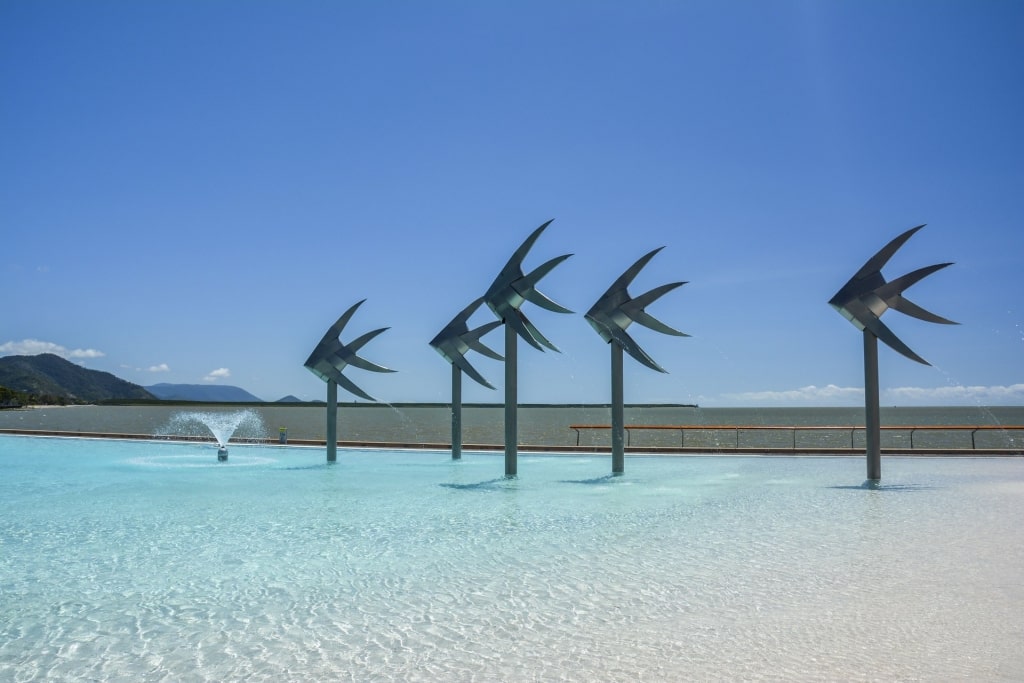
Cairns Esplanade Lagoon
Before setting out for a snorkeling or dive excursion, get your feet wet at the expansive lagoon swimming pool along the Cairns Esplanade. Swim and socialize with an incredible view out to the waters you’ll soon be exploring. The family-friendly saltwater lagoon pool has sandy beach-style entry points and shaded relaxation areas all around the edges.
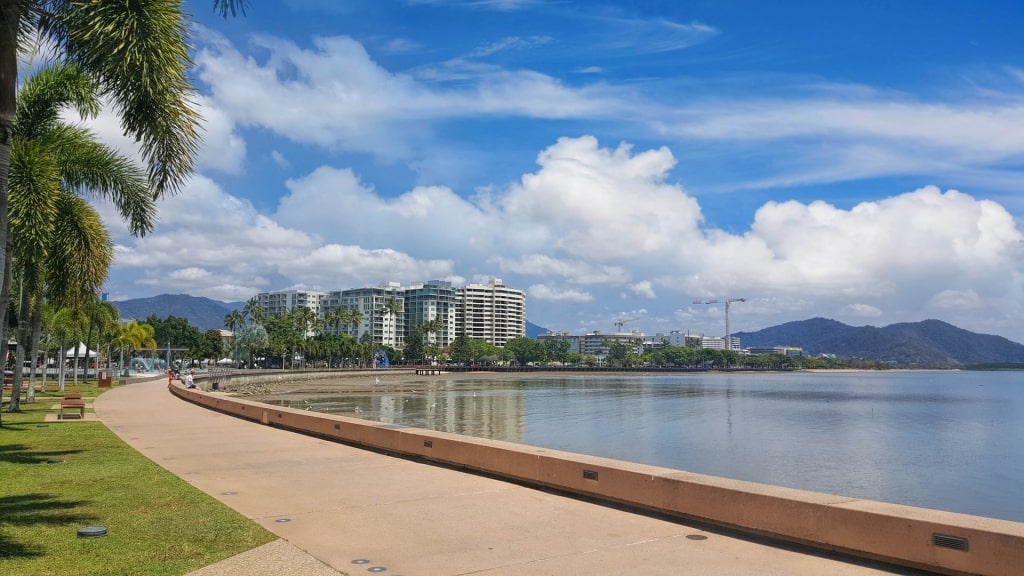
Cairns Esplanade
If you’re lucky enough to have a night or two in town, consider packing up a picnic to enjoy on the grass or picnic tables along the Esplanade. Australians love a barbecue, and you’ll find plenty of public BBQ grills along the long Esplanade walkway, along with friendly families cooking up a fresh catch, sausages, or just a trusty hamburger.
The sun may not set over the ocean since the Esplanade faces east, but the colors of the sunset in the west are reflected on the clouds and the surface of the waters, and the sky is no less dazzling than having the full sunset right in front of you.
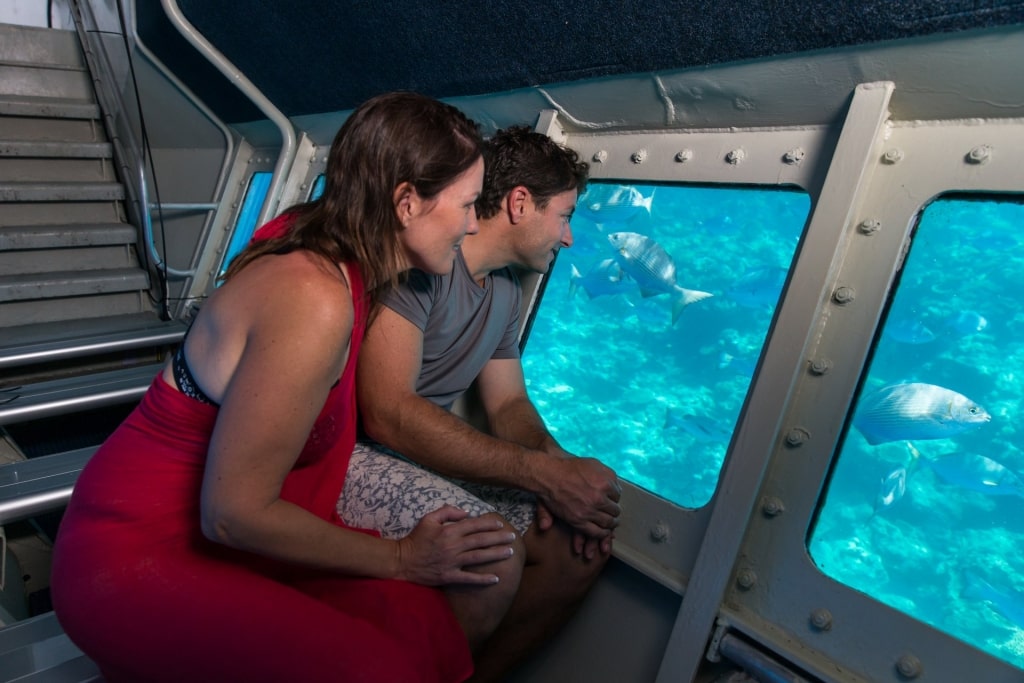
Glass-bottom boat trip in Cairns
Since Cairns is very close to the reef, those who would rather not get wet can still see the beauty that lies below the waves via a glass-bottom boat trip. You’ll see marine life and diverse corals without having to reserve your entire day, or even multiple days, for the experience.
Read: Things to Do in Cairns
Visiting from Port Douglas
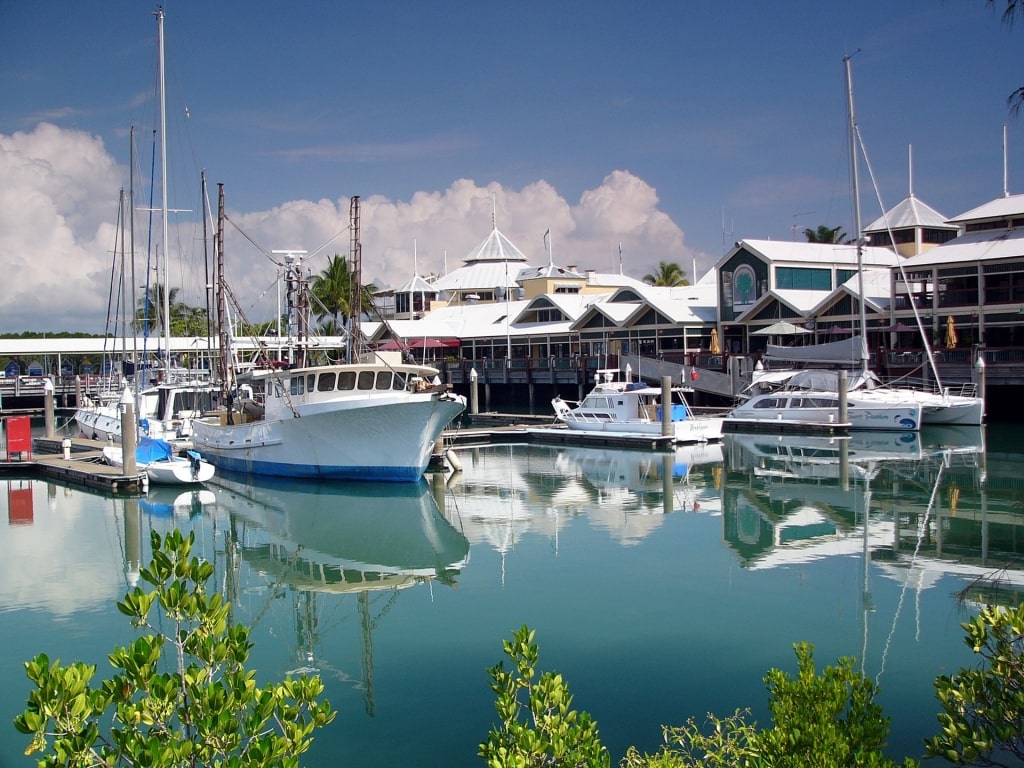
Port Douglas
The small town of Port Douglas may only be one hour’s drive north of Cairns, but it is a deserving destination for more than just its location a little farther up the Great Barrier Reef. Travelers come to Port Douglas to hike, sightsee, and experience the wonderfully biodiverse rainforest in nearby Daintree National Park.
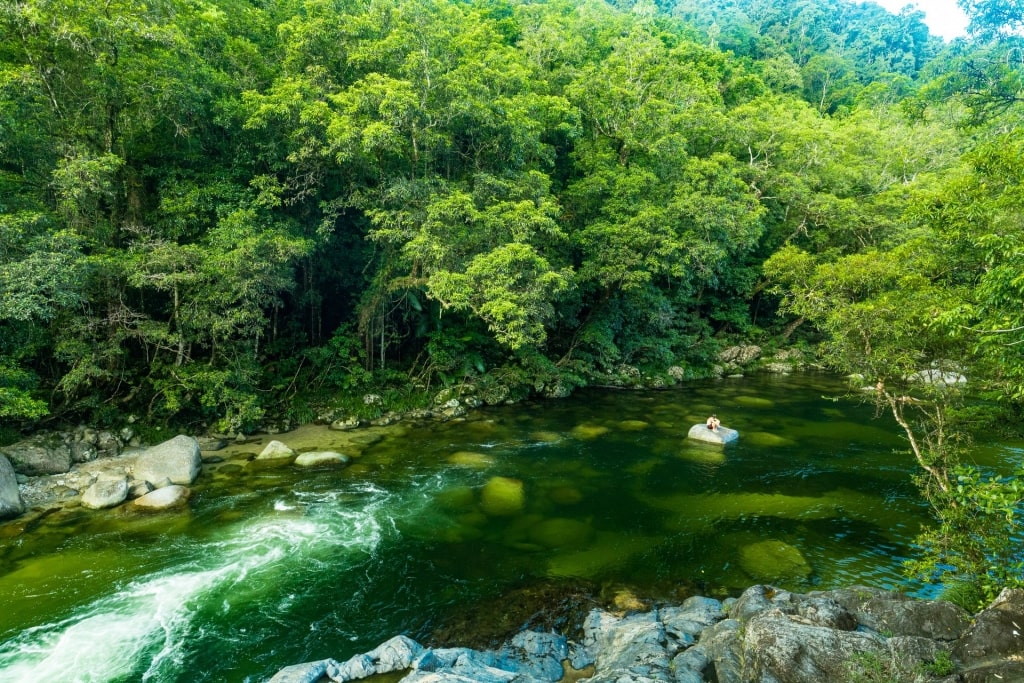
Daintree National Park
This sprawling natural wonder of Australia is the largest continuous area of tropical rainforest on the continent. Ancient and primitive plants still grow here today, and both flora and fauna are among the most diverse in the world. Take a boat up the Daintree River to spot saltwater crocodiles in the water and bats, butterflies, reptiles, birds, and monkeys on the land and in the trees.
Scuba Diving & Snorkeling Tips
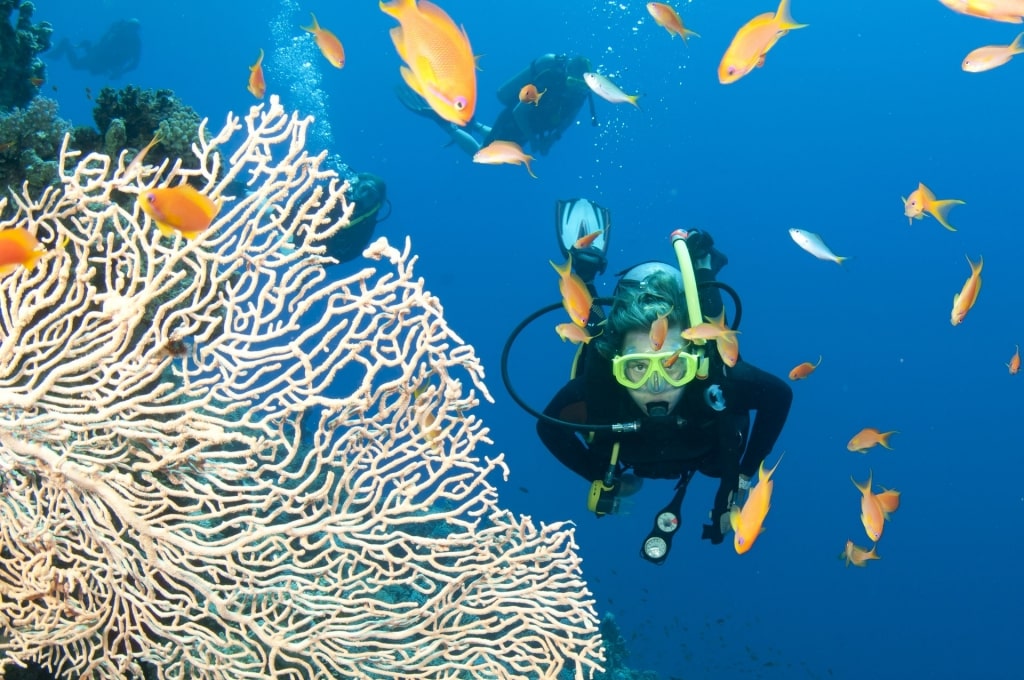
Great Barrier Reef
If you’re planning on scuba diving during your visit to the Great Barrier Reef, the best idea is to arrive already certified as an open water scuba diver. Local diving operators accept certifications from most major agencies, including PADI and SSI. Getting a specialty certification, like fish identification, boat diving, underwater photography, and coral reef conservation, will help you appreciate what you’re seeing and experiencing even more.
Plan to pack or rent a lycra “stinger suit,” as stinging jellyfish do frequent the waters of the Great Barrier Reef.
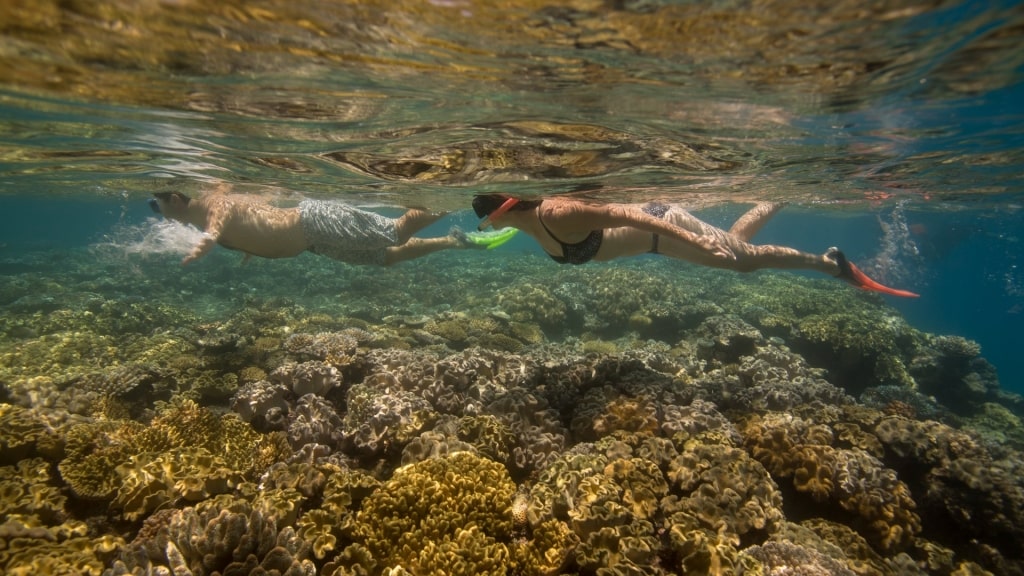
Great Barrier Reef
Sign up for a snorkeling adventure on the Great Barrier Reef so you can truly revel in the beauty of the open sky and open water, with spectacular corals just below the surface. Since this is open ocean, the snorkel boat guides will share safety briefings and details of how to communicate to them if you need help.
Communication, even when you’re doing great and having a fantastic time, is very important throughout the trip. Be clear about your swimming abilities or any hesitations you have, and wear a flotation vest to be extra safe.
Bring your underwater camera and waterproof cases for storing your electronics, even if they’re going to stay in your bag on the boat. With an underwater camera, you can snap photos of the turtles and colorful fish you encounter, while also ensuring that you have the photos to prove that you experienced this natural wonder of the world.
Pack some zip bags for stashing your phone, wallet, and anything else that you don’t want to get wet. Snorkeling boats are a splash zone, and what started out dry at the beginning of the day will likely be dripping wet at the end.
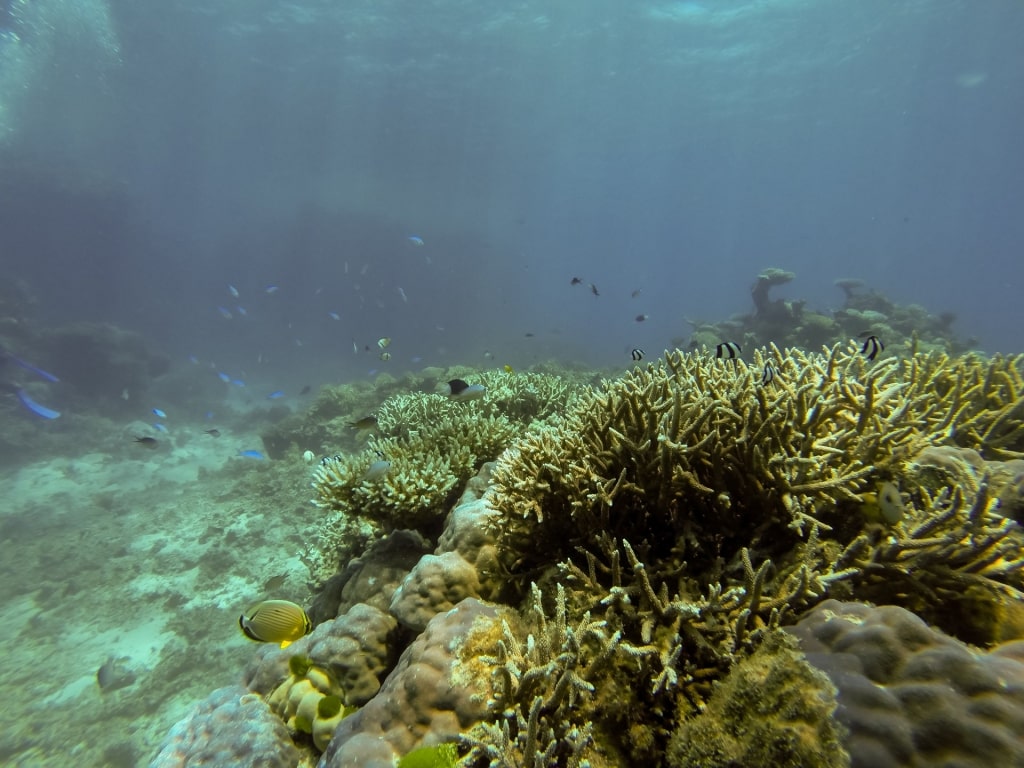
Great Barrier Reef
Keep hands and fins to yourself on the reef. That is less a guideline and more of a commandment of the Great Barrier Reef. The reef is a delicate ecosystem, and the incredible experience you have visiting it should also be available for others to enjoy for many, many years yet to come.
That means no touching, breaking, or taking coral and no touching any of the wildlife, no matter how cute the pufferfish are. This is Australia, after all, and there’s no telling how much of a potential danger something is unless you’re an expert. Admire, but do not touch. Enjoy, but do not take souvenirs from the natural environment.
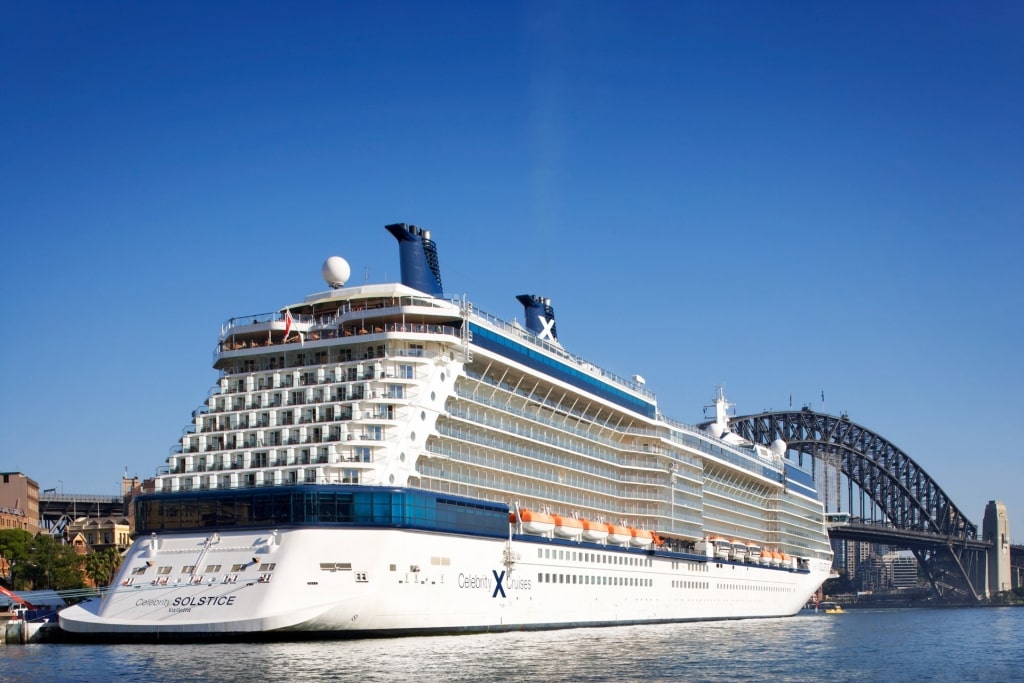
Celebrity Eclipse
On a cruise to the Great Barrier Reef, you’ll enjoy some of the best sightseeing, water activities, and biodiversity that Australia, and even the world, has to offer. Above and below the surface, the beauty and excitement that comes from being in one of the great natural wonders of the world is undeniable and something to remember forever.
If you’re ready to fulfill your dreams of experiencing one of the world’s largest reef systems and the vibrant communities who depend on it, browse Great Barrier Reef cruise itineraries on our website and book your incredible getaway today.
